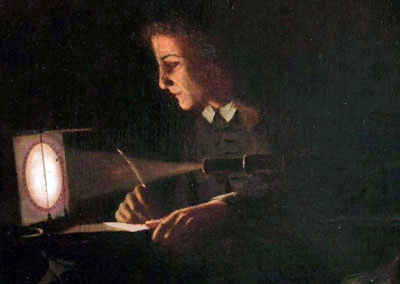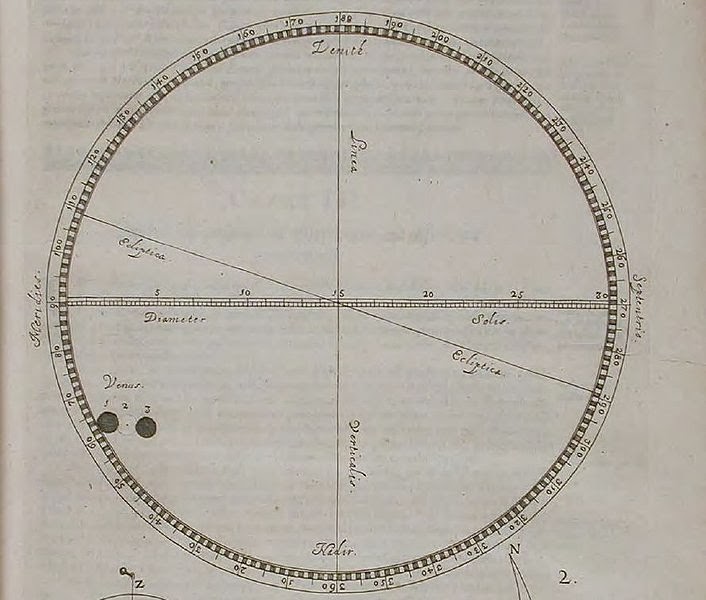
Jeremiah Horrocks (1618 – 1641), Portrait held in the collection of Astley Hall Museum and Art Gallery Chorley and the property of Chorley Council.
On January 3, 1641, English astronomer Jeremiah Horrocks passed away. He was the first scientist to demonstrate that the Moon moved around the Earth in an elliptical orbit and was the only person to predict the transit of Venus of 1639.
Jeremiah Horrocks – Early Life
Jeremiah Horrocks was born at Lower Lodge Farm in Toxteth Park, a former royal deer park near Liverpool, Lancashire. He grew up in a well educated family and was introduced to astronomy in early years. His Puritan upbringing instilled an enduring suspicion of astrology, witchcraft and magic. Horrocks was occupied with many astronomical tasks as a young boy and enrolled at the Emmanuel College and the University of Cambridge in 1632. As a sizar, he was associated with John Wallis, who was one of the few scientists to accept Copernicus’s heliocentric theory at Cambridge, which highly influenced the young student. Next to his studies, he read and learned the works of Johannes Kepler [5] as well as Tycho Brahe [6]. Unfortunately, in 1635 Horrocks left the university three years into studies without graduating for no obvious reason, but committed himself completely to astronomy and collected a large amount of equipment including books and a telescope. Now committed to the study of astronomy, Horrocks began to collect astronomical books and equipment; by 1638 he owned the best telescope he could find. Liverpool was a seafaring town so navigational instruments such as the astrolabe and cross staff were easy to find. But there was no market for the very specialized astronomical instruments he needed, so his only option was to make his own. He was well placed to do this; his father and uncles were watchmakers with expertise in creating precise instruments.
First Studies in Astronomy
It is assumed that Horrocks moved in with a farmer’s family in order to teach their children and perform his observations there. During his studies, Horrocks managed to demonstrate that the Moon moved in an elliptical path around the Earth as the first known person and he posited that comets followed elliptical orbits. Also, Horrocks anticipated Isaac Newton [4] in suggesting the influence of the Sun as well as the Earth on the moon’s orbit, which he acknowledged in his Principia and further works on Horrocks’ lunar research focused on the studies of tides in order to explain the nature of lunar causation of tidal movements.[7] He also examined the moon’s orbit with the help of Kepler’s laws, studied the tides and discovered the mutual orbital disturbances of Jupiter and Saturn.

A representation of Jeremiah Horrocks’ observation of a Venus transit across the Sun in 1639, published by Johannes Hevelius with Horrocks’ Venus in sole visa in 1662
The Venus Transit of 1639
In later years, Jeremiah Horrocks also increased his interest in the planet Venus. Kepler had calculated the transit of Mercury and Venus in 1631 in advance, but his calculations only lasted until 1636. The transit of Mercury on 7 November 1631 was observed by Pierre Gassendi in Digne,[10] the transit of Venus on 6 December 1631 was not visible from Europe. Horrocks was convinced that the astronomical tables of Philippe van Lansberge were inaccurate, predicted a Venus transit according to his own calculations for 1639 and built himself a helioscope. He focused the image of the Sun through a telescope onto a plane surface, whereby an image of the sun could be safely observed. He calculated that the transit at his observation place Much Hoole would actually start at around 3 pm on 4 December 1639, Gregorian calendar. His first view of Venus in front of the sun succeeded at 3:15 pm. As Horrocks observed the transit, his friend William Crabtree in Manchaster did the same to verify his findings.
Further Achievements
Horrocks’ results were not published until 20 years after his death in Venus in sole visa (Venus seen on the Sun), but were partly distorted for reasons of competition. This first confirmed observation of Venus transit allowed the orbital parameters of Venus to be determined more precisely. Moreover, he was able to obtain a good estimate of the diameter of Venus. The resulting distance between Earth and Sun of 95 million kilometres is too small compared to the current value of 150 million kilometres, but it was a significant improvement over the 20-fold too small value from antiquity, which had previously been used. Horrocks’ scientific work on Venus’ transit was published by Johannes Hevelius and caused a great excitement at the Royal Society even though it was actually written over 20 years before.[12] The work not only consisted of scientific findings, but also small poems and Horrocks’ romantic vision of the nature.
Jeremiah Horrocks himself passed away on 3 January 1641 at the very young age of only 22. After his death, he was described as the bridge connecting Newton with Copernicus, Galileo, Brahe, and Kepler.
Wilbur Applebaum, Chasing Venus lecture series, Part 1: The First Observation of a Transit of Venus, [13]
References and further Reading:
- [1] BBC report: Celebrating Horrocks’ half hour
- [2] Jeremiah Horrocks Institute
- [3] Applebaum, W.; Hatch; Hatch, R. A. (1983). “Boulliau Mercator and Horrocks Venus in Sole Visa – Three Unpublished Letters”. Journal for the History of Astronomy
- [4] Standing on the Shoulders of Giants – Sir Isaac Newton, SciHi Blog
- [5] And Kepler Has His Own Opera – Kepler’s 3rd Planetary Law, SciHi Blog
- [6] Tycho Brahe – The Man with the Golden Nose, SciHi Blog
- [7] Sir Isaac Newton and the famous Principia, SciHi Blog
- [8] Jeremiah Horrocks at Wikidata
- [9] O’Connor, John J.; Robertson, Edmund F., “Jeremiah Horrocks”, MacTutor History of Mathematics archive, University of St Andrews.
- [10] Whatton, Arundell Blount (1875). Memoir of the Life and Labors of the Rev. Jeremiah Horrox. London: William Hunt and Company.
- [11] Pierre Gassendi and his Trials to reconcile Epicurean Atomism with Christianity, SciHi Blog
- [12] Johannes Hevelius and his Selenographia, SciHi Blog
- [13] Wilbur Applebaum, Chasing Venus lecture series, Part 1: The First Observation of a Transit of Venus,
Smithsonian Libraries and Archives @ youtube - [14] Timeline for Transit of Venus, via DBpedia and Wikidata





